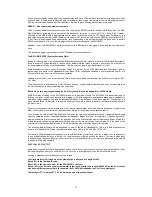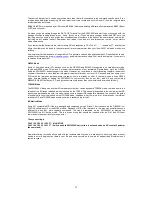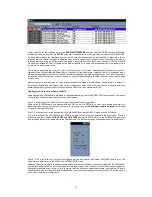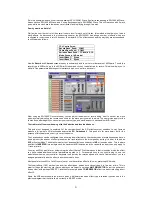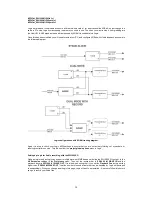
20
So how does one go about this?
Here is a quick guide to recording with effects. The methods here apply to all users of the SW1000XG.
Decide if your track is to be recorded as mono or stereo. The SW1000XG is a 12-stream card. This basically means
that it can independently process up to 12 streams of audio data at the same time. This isn’t the number of tracks it
can play back (a popular misconception), as the SW1000XG can easily handle hundreds of audio tracks. It refers to
the individual wave parts that you have control over at hardware level.
The SW1000XG wave outs are set up as follows
SW1000 Wave out #1
SW1000 Wave out #2
SW1000 Wave out #3
SW1000 Wave out #4
SW1000 Wave out #5
SW1000 Wave out #6
This corresponds to 6 stereo pairs of MME wave audio ports. This gives us our total of 12 wave streams. As each of
these ports when panned correctly can act as an independent mono wave track.
So for example, if we wished to record a stereo part on track 1. We would set it up as shown in the next image.
Notice the Pan position is set to C for Centre. This means that SW1000 Wave record and playback to SW1000 #1
Wave out will be equally split between the left and right channels of SW1000 Wave Out #1. If you record a track on
this, and then open it up in the TWE editor that comes with the SW1000XG, you will find that the track is stereo.
To record a pseudo mono track to SW1000 #1 Wave, you could set up your panning as shown in the next image.
This would force all of the audio data to the left channel of SW1000 #1 Wave Out, and allow you to record another
track to this port with the panning set to R7 on the next track. Thus giving you 2 discreet mono tracks (well actually 2
stereo tracks with audio info not present on 1 side). If you open up the wave parts in the TWE menu (Tiny Wave Edit)
you will see them as stereo tracks with just the one side being blank. Now in the SW1000XG mixer, you will be able
to mix the individual volumes, effects levels etc of each of these 12 wave streams. The difference between tracks and
streams is easy to describe, and so to avoid further confusion I shall endeavour to do so.
Imagine a gospel choir comes into your studio, and you wish to record them and a group of other musicians. You
may want to record 6 people in the choir individually to build up a thick harmonious sound, but then when they are
mixed to your satisfaction, control their overall volume level as a single block against any other instruments that you
have recorded. By the time you are finished, you may have perhaps 20-30 tracks of audio with the 6 choir parts,
maybe a couple of guitars, a bass, strings, piano etc. (all audio tracks). The way that you would control the audio
playback streams would be to group the choir onto say SW1000 #1 Wave out, and perhaps group the string section
onto SW1000 #2 Wave out. You would still have all of your audio tracks, but now would be able to using the
SW1000XG audio mixer, control the overall amount of volume for each group of tracks
This is simple to see in a diagram. Basically you can have as many tracks as your software will allow, sub-
mixed down to 12 discreet wave ports.






